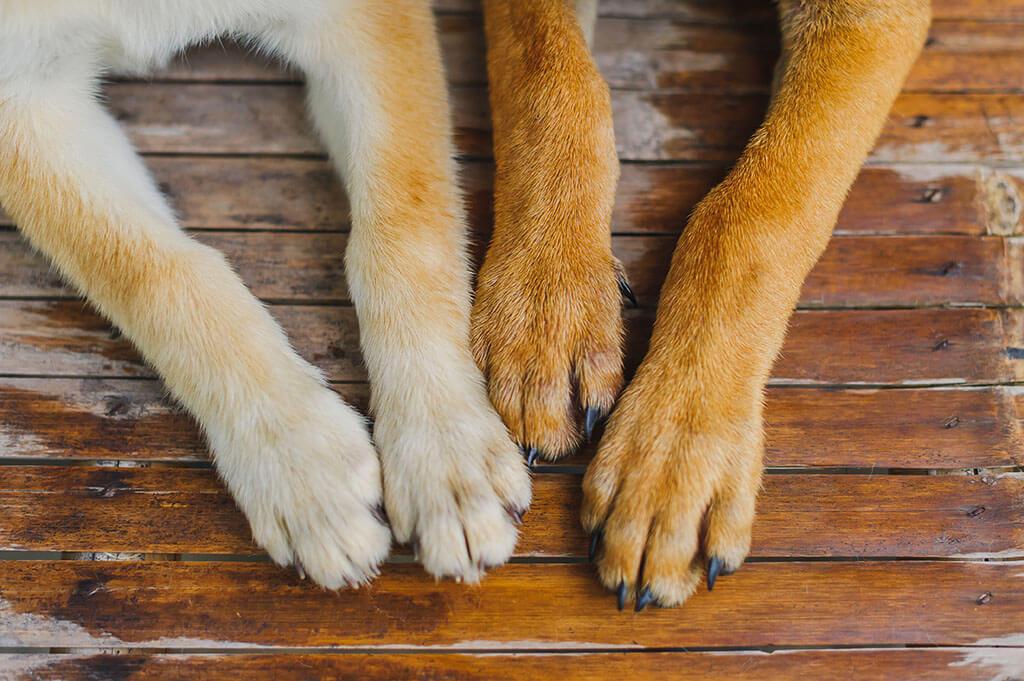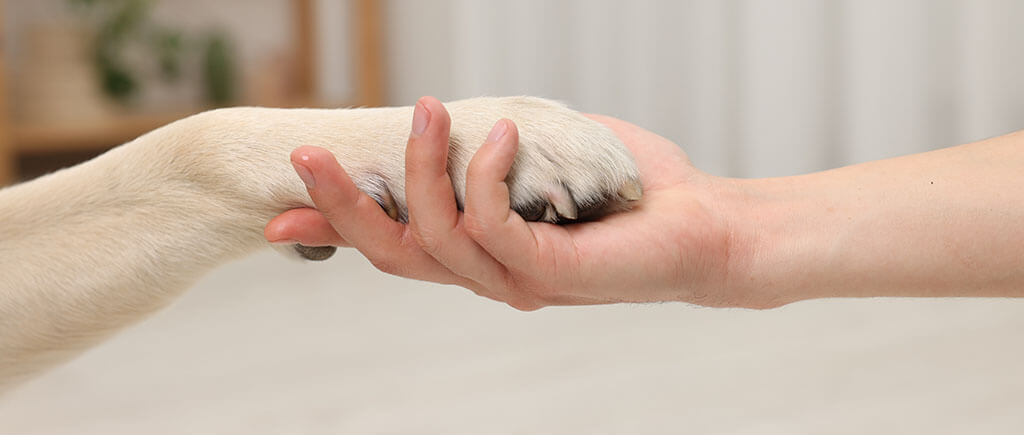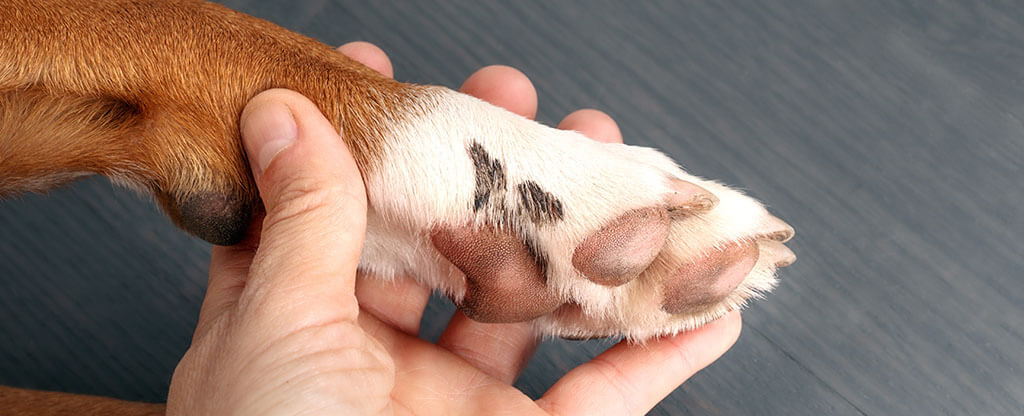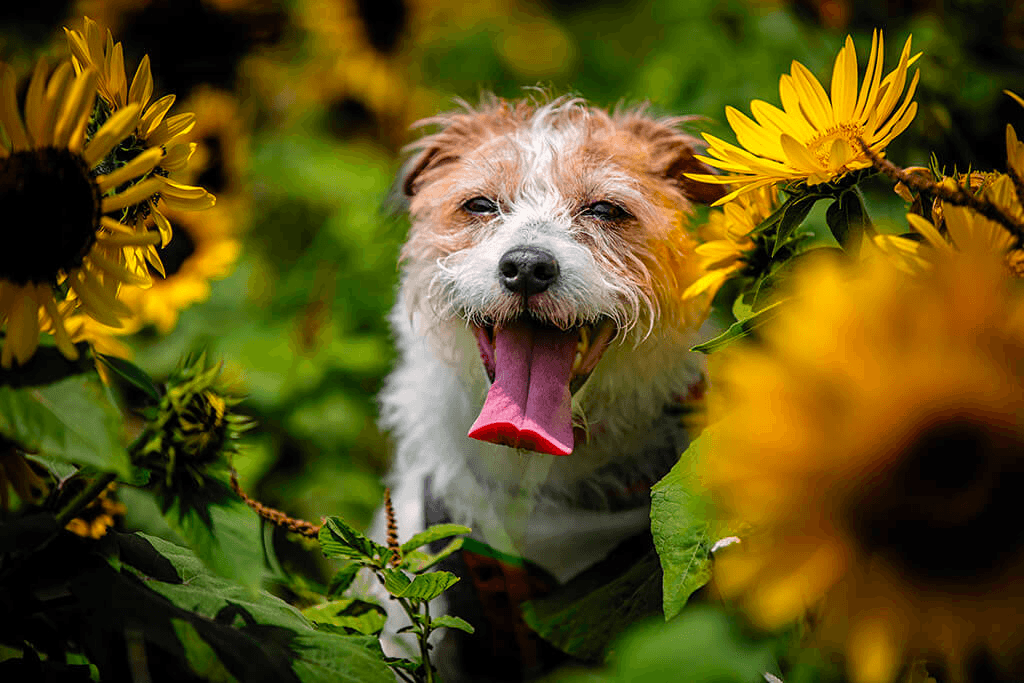Dive in to find out how to tackle red paws head-on, ensuring your dog’s comfort and well-being. With our expert advice, you can rest assured that red paws won’t stand in the way of your dog’s zest for life.
Red Paws in Dogs: Causes and Remedies Explained

Have you ever noticed your dog’s paws looking red or irritated? Red paws in dogs can be described as irritation and swelling of the paw and skin on their paws, nails, and pads. This can happen when something bothers their paws, like allergies, an infection, or an injury.
Ignoring these red paws could lead to discomfort or pain, so it’s essential to address the underlying cause as soon as possible.
The good news is, by understanding what’s causing those red paws and giving your dog the right care, you can make them feel better again. In this article, we will discuss common causes of red paws in dogs, when to seek veterinary care, treatment options, and things you can do at home to prevent red paws in your dog.
Key facts:
- Allergies are a leading cause of red paws in dogs.
- Besides allergies, red paws can be caused by infections, such as bacterial or yeast infections, injuries, burns from hot asphalt, cold weather, or exposure to chemicals.
- Constant paw licking, chewing, swollen toes, and limping are other signs to look for when red paws are noticed.
- Fish oil supplements can benefit a dog’s skin health and contribute to healthier paws.
- Seek veterinary care promptly if red paws have open sores, bleeding, or if your dog shows signs of discomfort and behavioral changes.
- Treatment will depend on the underlying cause but may include topical products for skin and prescribed medication.
- To prevent red paws, keep your dog’s paws clean and dry after walks. Avoid walking on hot surfaces and ensure a safe environment free from harmful chemicals.
Why Does My Dog Have Red Paws?
There are several reasons that can lead to your dog having red paws, ranging from allergies and infections to environmental factors and irritants. Understanding the possible causes can help you provide the right care and ensure your dog’s paws stay healthy and comfortable. Let’s explore some common reasons why your dog may have red paws:
- Allergies, whether from food, environmental factors such as pollen or dust, or contact with certain irritants, can cause redness and inflammation in your dog’s paws.
- Bacterial or yeast infections can lead to redness in the paws, especially if there are cuts or wounds that become infected.
- Extreme weather conditions, such as hot pavements in summer or cold and dry air in winter, can irritate your dog’s paw pads and cause redness.
- Exposure to chemicals like cleaning products and fertilizers can lead to skin irritation and discomfort.
- Paw injuries, such as cuts, burns, or punctures, can cause redness and swelling. Getting small objects stuck in their paws or between their toes can also cause pain and redness.

Knowing What Other Symptoms to Look for and When to Get Help
Recognizing red paw signs in dogs is important for timely intervention and proper care. It’s beneficial to regularly examine their paws when they are calm, like during playtime or grooming.
Here are other clinical signs a dog owner might observe along with red paws:
Paw licking and chewing – Excessive paw licking, chewing, or biting is a common sign of discomfort or irritation. If you notice your dog engaging in these behaviors, it could be an indicator of a bigger problem.
Swelling and warmth – Gently touch your dog’s paws to check for swelling or increased warmth. Inflamed paws may feel puffier than usual and slightly warmer to the touch.
Limping or lameness – If your dog starts limping or favoring a specific paw while walking, it could indicate pain or sensitivity in that area.
Behavioral changes – Watch for changes in your dog’s behavior, such as reluctance to go for walks, reluctance to play, or increased irritability, which could be a sign of discomfort.
Sensitive paws – Your dog may exhibit sensitivity like pulling away or whining when you touch their paws or try to examine them closely.
How to Treat Your Dog’s Red Paws – 11 Actions to Follow for Minor Cases
When your dog’s paws become irritated, taking quick and effective measures is important to restore their comfort and well-being. This comprehensive list outlines ten essential steps to treat your dog’s red paws, providing actionable guidance for a swift recovery.
- Thorough inspection: Examine your dog’s paws closely to identify the extent of redness, swelling, or irritation. Look at the nail beds, in between the toes, and the paw pads underneath.
- Epsom salt soak: Prepare a warm Epsom salt solution and gently soak your dog’s paws for about 5-10 minutes. This can help reduce inflammation and soothe discomfort.
- Moisturizing paw balm: Apply a pet-safe paw balm to soothe your dog’s paw pads.
- Anti-Itch relief: Use a pet-safe anti-itch spray like this one or aloe vera gel to soothe any itching or discomfort.
- Keeping paws clean: Regularly clean your dog’s paws with a mild, pet-safe shampoo or wipes to remove potential irritants and allergens.
- Dog booties: Protect your dog’s paws during outdoor walks by using dog booties, especially on hot or rough surfaces.
- Environmental management: Check your yard or areas around your dwelling for prickly objects, rocks, or debris that may injure your dog’s paws.
- Omega-3 fatty acid supplements: Consider adding omega-3 fatty acid supplements to your dog’s diet. These can promote healthy skin and reduce inflammation.
- Monitor progress: Keep a close eye on your dog’s paw condition and note any improvements or worsening of redness.
- Consult a Veterinarian: If redness persists, worsens, or is accompanied by pain, consult a veterinarian for professional evaluation and treatment.
Elizabethan collar: Keep your dog from licking and chewing at his paws by placing a cone on until his paws have healed.
If none of these tips work, then it is time to take your dog to see a veterinarian for guided medical help.
Veterinary Treatments for Severe Cases:
Prescription medications
Veterinarians may prescribe anti-inflammatory, antibiotic, or antifungal medications to address severe red paws caused by infections or inflammation.
Topical treatments
In some cases, a veterinarian may recommend a medicated shampoo or mousse to apply to your dog’s paws for localized treatment. Use an anti-itch spray prescribed by your veterinarian to relieve any itching and discomfort.
Dietary changes
If food allergies are suspected, your veterinarian may advise a special hypoallergenic diet to eliminate potential triggers.
Bandaging and wound care
For open sores or injuries on the paws, proper bandaging and cleaning of any wounds might be necessary to promote healing.

Preventive Measures to Avoid Red Paws in Dogs
When it comes to preventing red paws in dogs, a few simple yet effective tips and best practices can go a long way in safeguarding their paws from irritation and discomfort.
- Make it a habit to inspect your dog’s paws regularly, especially after walks or outdoor activities. Look for any signs of redness, cuts, or foreign objects stuck between their toes.
- Consider using dog booties, especially during extreme weather conditions. This can protect their paws from hot pavements in summer or icy surfaces during winter.
- Keep your dog away from areas treated with harmful chemicals, such as harsh cleaning products, pesticides, or fertilizers.
- Check your home and yard to make sure they are free from sharp objects, thorns, or debris that can injure your dog’s paws. Provide a safe and clean space for them to play and explore.
- During hot weather, try to walk your dog during cooler times of the day to avoid burning their paw pads on hot pavement.
- If your dog has known allergies, try to avoid exposure to the specific allergens that trigger their reactions. This may involve adjusting their diet or limiting outdoor time during peak allergy seasons.
Final Thoughts on Red Paws in Dogs
Red paws in dogs can serve as a visible signal of potential health issues, urging us, as responsible dog owners, to take action. From mild cases caused by allergies to severe cases linked to infections and environmental factors, understanding the various causes and seeking solutions is essential in providing the best care for your dog.
Proper grooming, regular paw inspection, and maintaining a safe environment are critical preventive measures that can significantly reduce the likelihood of red paws.
By keeping their paws healthy, we ensure our dogs can fully enjoy their daily activities, explore the world, and lead active lives.
FAQs
1. What can I expect when I take my dog to the Vet for his red paws?
Your veterinarian will perform a full physical exam and check the paws for redness, swelling and foreign material. Certain tests to look for an excess of bacteria and yeast may be done. Depending on those results, anti-inflammatories, antibiotics, or antifungal medications may be prescribed.. Certain topical products may be recommended, including medicated shampoos, mousses, or anti-itch spray. For open sores or wounds on the paws, placing a soft bandage may be needed. Ideally, your dog may have to wear an Elizabethan collar (or cone) temporarily to prevent licking or chewing.
2. Is it essential to groom my dog’s paws regularly, and how do I do it properly?
Regular paw grooming is important for your dog’s overall health and well-being. Proper paw care can prevent issues like red paws, infections, and discomfort. Here are a few things you can do:
- Trim your dog’s nails routinely using a dog-specific nail clipper. Be cautious not to cut too close to the quick, as it can cause bleeding and pain.
- Gently clean your dog’s paw pads with a damp cloth to remove dirt and debris. Pay attention to the areas between their toes.
- Apply a pet-safe paw balm to keep their paw pads moisturized and prevent dryness.
- Routinely check for any foreign objects like splinters, thorns, or debris that might be lodged in their paws.
3. Can certain dog breeds be more susceptible to developing red paws?
Some dog breeds are more prone to developing red paws due to various factors such as skin sensitivities, allergies, and genetics. English Bulldogs, Boxers, French Bulldogs, and Pugs are known to have skin folds on their faces and paws that can trap moisture and debris, potentially leading to irritation. Also, smooth, short-coated breeds like Dachshunds and Great Danes are commonly found to develop red paws. However, any dog can experience red paws regardless of their breed, so it’s important to provide proper care for all dogs.
4. Is it safe to use over-the-counter medications for my dog’s red paws?
Using over-the-counter medications for your dog’s red paws is not recommended without consulting your veterinarian first. Some human medications, including creams and ointments, may contain ingredients like zinc oxide or essential oils that could cause stomach upset when ingested or irritation to the mouth or skin. Always seek professional veterinary advice before administering any medication to ensure the safety and appropriate treatment for your dog’s red paws.
Sources:
Cote DVM DACVIM(Cardiology and Small Animal Internal Medicine), E. and Leah Cohn DVM PhD DACVIM (SAIM). Clinical Veterinary Advisor: Dogs and Cats. 4th Edition. Elsevier. 2019.
Merck Veterinary Manual. (2022). Atopic Dermatitis in Dogs. Retrieved from https://www.merckvetmanual.com/integumentary-system/atopic-dermatitis/canine-atopic-dermatitis?
 D
D





